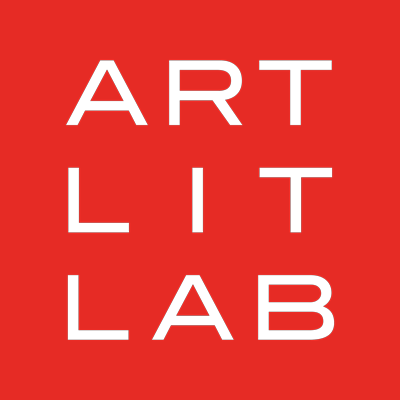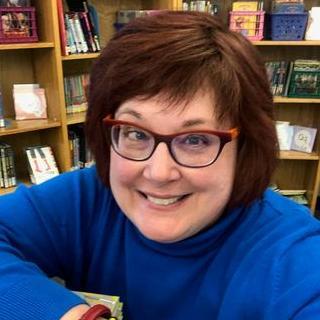First Place and Honorable Mention winners of the 2022 Tofte/Wright Children’s Book Award in Conversation
Laura Anne Bird: What a thrill to be chatting with you today, Pat! You’ve garnered numerous accolades since you began writing picture books in 2013. How did it feel to win a Wisconsin Writers Award for See You Someday Soon?
Pat Zietlow Miller: The award ceremony on May 20 was incredibly special. Writing is such a solitary endeavor, so it was wonderful meeting writers of poetry, essays, adult books and more. I loved listening to them read from their works.
See You Someday Soon has a special spot in my heart. It’s about how to love and stay connected to someone far away. And Suzy Lee’s art took my words to a new level.
I’ll turn the question back to you: how did it feel to win Honorable Mention for your debut middle grade novel, Crossing the Pressure Line?
LAB: Crossing the Pressure Line takes place in the Northwoods and is my love letter to our state, so it feels amazing to have won a Wisconsin Writers Award. It took me more than two years to write and edit Crossing the Pressure Line. Sending it out in the world required a sense of courage and conviction I didn’t know I had, so I’m exceedingly grateful that others have embraced it. I think a love of middle grade fiction starts with a love of picture books. Do you see picture books as essential to raising intelligent, emotionally acute children?
PZM: Absolutely. Picture books help readers of all ages gain a wider view of the world. We’re all familiar with our particular corners of the world, and it’s easy to assume everyone’s corner is much like ours. Picture books—fiction and nonfiction—provide a glimpse into so many other corners of the world, which makes readers smarter and more empathetic as they learn about all the different ways people think and live. As readers learn about these differences, they also see the similarities that connect us as humans. It’s a beautiful thing. Talk to me about middle grade fiction. Why is it your sweet spot?
LAB: Middle grade novels are geared toward kids ages 8-12, but their themes are universal and eternal—like what it means to belong, why it’s crucial to speak up against injustice, and how to become our own best cheerleaders. They remind us that everybody struggles in different ways, so it’s good to be kind—always. I love that middle grade fiction gets to the heart of a tender, pivotal time, when kids are trying to figure out who, what, and how they want to be. With only one book to my name (for now, at least), I’m so impressed that you’ve sold 25 titles to-date, Pat. Which one has been the most difficult—or satisfying—to write?
PZM: The most difficult and the most satisfying book for me to write was In Our Garden, which Melissa Crowton illustrated. I had the plot, but it took me 24 different drafts to figure out the proper structure to tell the story. I tried it in prose, rhyme, and individual poems—first person, third person, and more before it turned into free verse. I pulled out a lot of hair, writing draft after draft, so finally figuring out what that story needed was hugely satisfying. And it was chosen for Dolly Parton’s Imagination Library, which made the revising well worth the time and frustration.
LAB: It helps me immensely to hear you talk about the challenges of rewriting! I have gnashed my teeth more times than I care to recount. I’ve been working on my second manuscript for what feels like ages and—like you—have made some major edits, including changing the narration from first to third person. I can only hope that when I finally have a finished product in place, I’ll experience the same sense of satisfaction you’ve had with In Our Garden.
PZM: You spent the first twenty years of your career in the nonprofit sector. Has it been a big shift going from writing grant proposals and special event scripts to writing creatively?
LAB: The biggest shift for me has been the intense emotional investment that goes along with writing fiction. It’s easy to set aside, say, a donor stewardship letter at the end of the day and not think about it until I’m in front of my laptop again. My middle grade manuscripts, however, are always on my mind. I’m constantly ruminating about plot, theme, and setting. My characters become as real to me as my own family. I cannot separate myself from them; it’s like we’re living this grand, crazy adventure together. You have a similar career arc, Pat, in that you worked in corporate communications before leaving to write for children full-time. Did you bring any tools and skills with you?
PZM: Working in a corporate setting taught me how many different ways there are to tell the same story. I’d write something, and it would be reviewed by people with no writing background, and they’d all have comments and suggestions. I learned how to address their concerns while still writing something I felt good about. So, now, handling feedback from an editor who does have a writing background is almost easy!
LAB: I love how you say “almost” easy. It’ll never be a walk in the park, will it? No matter how many revisions and drafts I go through, I still cry whenever I receive tough suggestions from my editor, and then I have to walk—for miles, and preferably in nature—to get my head together. How do you handle your writing-related stress?
PZM: I usually do one of two things: procrastinate, even though I know that’s not ideal, or work on something else that isn’t causing me stress. Both approaches let me temporarily step away from my stress while the feedback—I hope—percolates in the back of my brain. And, sometimes, I have to just force myself to sit down and start. I always feel better once I do. I firmly believe that revising leads to a better final product once I dig in and get past the fear of change.
LAB: Switching from writing to reading: do you have any recommendations for picture books?
PZM: Two recent favorites are Enough Is … by Jessica Whipple and Nicole Wong. It beautifully addresses the age-old question, “How much is enough?” Then, there’s The World’s Best Class Plant by Liz Garton Scanlon, Audrey Vernick, and Lynnor Bontigao. It’s a funny, moving story of a class that falls in love with an unremarkable plant, names it Jerry, and turns it into something wonderful. What about you? What do you recommend for middle grade fiction?
LAB: I adore Dan Gemeinhart’s The Remarkable Journey of Coyote Sunrise and Kate Albus’s A Place to Hang the Moon. I gravitate toward novels that feel classic and remind me of my own childhood, which is why I reach for authors like Katherine Applegate and Lauren Wolk. But I also love writers who introduce me to characters of different races, ethnicities, and sexual orientations—like Jason Reynolds, Kelly Yang, Christina Soontornvat, and Meg Grehan. It’s so important that all kids can see themselves reflected in the pages of books.
PZM: You have three teenagers, a husband, and a dog. How and where do you find the inspiration to write?
LAB: I wrote Crossing the Pressure Line in a coffee shop on the west side of Madison and at my kitchen table, surrounded by chaos. When Crossing the Pressure Line launched, my husband looked at me and said, “Do you think it’s time you had an office?” So we transitioned a guest bedroom into my own work space, and I’m thankful for the privacy—although I still love working in coffee shops. My inspiration to write comes from many sources, like walks in nature, music, meditation, and solitude. I strive to live mindfully and tap into all my senses, which has led to unexpected creative gifts. Finally, I have to give a shout-out to Elizabeth Gilbert’s Big Magic: Creative Living Beyond Fear for helping me honor my vision. What about you? Your two daughters are out of the house, but you still have a husband and multiple pets. How do you pursue a creative life?
PZM: Creativity is noticing small details and thinking of cool things to do with them. So many of my books have started with interesting bits of a conversation I overheard, or a news story I read, or the cool socks I saw someone wearing. No matter how calm or busy life is, notice what’s around you and wonder about it. Curiosity fuels creativity. No matter how busy you are, as long as you can notice and wonder, you can create.


